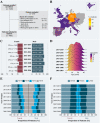International surveillance study in acute spinal cord injury confirms viability of multinational clinical trials
- PMID: 35705947
- PMCID: PMC9202190
- DOI: 10.1186/s12916-022-02395-0
International surveillance study in acute spinal cord injury confirms viability of multinational clinical trials
Abstract
Background: The epidemiological international landscape of traumatic spinal cord injury (SCI) has evolved over the last decades along with given inherent differences in acute care and rehabilitation across countries and jurisdictions. However, to what extent these differences may influence neurological and functional recovery as well as the integrity of international trials is unclear. The latter also relates to historical clinical data that are exploited to inform clinical trial design and as potential comparative data.
Methods: Epidemiological and clinical data of individuals with traumatic and ischemic SCI enrolled in the European Multi-Center Study about Spinal Cord Injury (EMSCI) were analyzed. Mixed-effect models were employed to account for the longitudinal nature of the data, efficiently handle missing data, and adjust for covariates. The primary outcomes comprised demographics/injury characteristics and standard scores to quantify neurological (i.e., motor and sensory scores examined according to the International Standards for the Neurological Classification of Spinal Cord Injury) and functional recovery (walking function). We externally validated our findings leveraging data from a completed North American landmark clinical trial.
Results: A total of 4601 patients with acute SCI were included. Over the course of 20 years, the ratio of male to female patients remained stable at 3:1, while the distribution of age at injury significantly shifted from unimodal (2001/02) to bimodal distribution (2019). The proportional distribution of injury severities and levels remained stable with the largest percentages of motor complete injuries. Both, the rate and pattern of neurological and functional recovery, remained unchanged throughout the surveillance period despite the increasing age at injury. The findings related to recovery profiles were confirmed by an external validation cohort (n=791). Lastly, we built an open-access and online surveillance platform ("Neurosurveillance") to interactively exploit the study results and beyond.
Conclusions: Despite some epidemiological changes and considerable advances in clinical management and rehabilitation, the neurological and functional recovery following SCI has remained stable over the last two decades. Our study, including a newly created open-access and online surveillance tool, constitutes an unparalleled resource to inform clinical practice and implementation of forthcoming clinical trials targeting neural repair and plasticity in acute spinal cord injury.
Keywords: Aging; Benchmark; Epidemiological shift; Functional recovery; Neurological recovery; Spinal cord injury; Surveillance study.
© 2022. The Author(s).
Conflict of interest statement
The authors declare that they have no competing interests.
Figures




References
-
- National Spinal Cord Injury Statistical Center . Facts and figures at a glance. Birmingham: University of Alabama at Birmingham, 2020. Natl Spinal Cord Inj Stat Cent; 2020.
Publication types
MeSH terms
LinkOut - more resources
Full Text Sources
Medical

